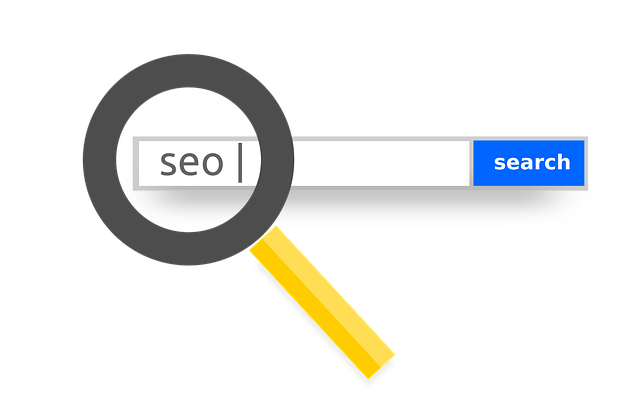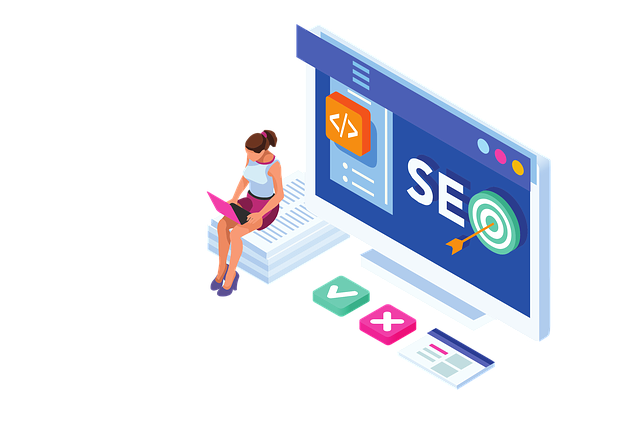If you ever created a website I’m sure you know what is SEO. If don’t know:
SEO stands for: Search Engine Optimization
SEO is a way to improve a website presence by ranking better in search engine results (SERP) pages, preferably on the 1st place or near the top on the page one (on Google).
Why?
Most of the traffic came from the links displayed on the first page (and first 5). Barely nobody see what is on page 22 of google search results.

If you choose to use SEO as main way to gain free traffic for your website, be aware that results are not immediately measurable as with social media. You’ll have to put a lot of effort to get results that are visible after months but it will worth on long term.
In practice purpose of SEO is to rank better and get more traffic from organic search results performed through Google search and other search engines like Bing and Yahoo. Youtube, Facebook, PlayStore, AppStore, Amazon and every other work in similar manner.
Ads by: ⓘ Random Ads
Everybody needs SEO
If you want free, organic traffic and visitors keep coming on your websites you need it too. This posts is all about what is SEO and how it can help your website, blog, article to rank well and be viewed by internet users interested in your stuff.
Don’t forget that SEO is part of a wider term – SEM (Search Engine Marketing). Every marketing consists of advertising and strategies that involves paid ads. SEO is just only a free method. So…
What is SEO exactly
It is a cost effective way to get constant flow of quality organic traffic for your site no matter if it is a company homepage, ecom store, landing page or a personal blog. Do your SEO correctly and visitors will start visiting your creation.
SEO is all about quality of your site, content, keywords, searches and links.
Your website needs SEO too
Is SEO free?
More or less. You’ll need to invest time and effort to do it write. Or you can pay somebody to do it for you but in general Yes, SEO is free.
But, not as free as you think. You will spend a lot of time searching for competitive keywords, create content, building backlinks and lot of other stuff. Bad news is that it will take forever (months and even couple of years) to see visitors coming through the efforts put in SEO alone.
In long term your time and efforts invested in SEO will pay off as it is one of the best ways to drive free traffic to your website.
If you are interested in having eyeballs on your stuff only, traffic can be also obtained through: social media, paid methods, PPC advertising, SEM, email marketing and more tricks you can use to improve SEO (or penalize it).
What it takes to do SEO
Must have a website of some kind at the first place, willingness and time to do SEO in order to improve it.
- Analyze your website for SEO and technical issues
- Check for errors
- Find the problems and fix them
- Optimize website design, UI/UX, performance and speed
- Do a keyword research
- Find your competitors sites and keywords
- Get ideas for new topics
- Create unique content
- Update your old content
- Inter link existing posts and pages
- Include your targeted keywords in your content
- Use best SEO practices
- Fix duplicate content and redirects
- Build backlinks
- Utilize social media to get social signals and traffic
- Create multiple channels
- Try to be present everywhere
- Automate social media sharing
- Make connections with influencers
- Grow your audience
- Build your brand awareness
Create a SEO strategy
Remember the above steps and try to follow them in that order.
Ads by: ⓘ Random Ads
Concentrate on onsite SEO first
These are some onsite SEO ranking factors you can improve and optimize to rank better:
- If can use a keyword in your domain name
- Use HTTPS instead HTTP version of your site
- Use a unique theme/template for your site
- Try to improve site speed
- Use meta tags
- Use rel=canonical
- Use 404 redirects
- User friendly navigation and URL structure
- Include About page, Privacy policy, Contact page etc.
- Use XML sitemaps, robots.txt and ads.txt (app-ads.txt for apps)
- Use keywords in anchors, links, titles, images
- Optimize internal links (inlinks)
- Optimize titles and descriptions
- Text formatting of H1, H2, H3 bold and strong
- Image optimization
- Use ALT tags for image description
- Use analytics and webmaster tools
Do this technical part and you can proceed to:

Creating unique quality content
Content is king – isn’t it? You need content. Thin content and short posts don’t rank well anymore.
Sites with only images (without descriptions and ALT tags), keyword staffed articles, copied content, PBNs and link farms will get you penalized. Don’t create these. Don’t link to them and don’t get backlinks from such places.
Recipe for a blog post with great content that ranks well would be something like:
- Create unique high quality content. This applies to all kind of content: text, articles, images, videos.
- Write long articles. 500 words are not enough. If want to rank high and get on the 1st page of Google search results, your article should be 3000+ words, propperly formated, informative, brings value to the readers (help them in a way).
- Add a personal touch (and a dose of humor).
- Include several images that relates to the context, add alt tag and optimize their size before upload or try to use better image formats.
- Add an infographic and video/s too.
- Include several links to relevant external sites but don’t miss the opportunity to build inlinks and link to existing articles that are already part of your site.
- Smartly include your keywords in the title and article itself. Don’t use them too much 0.2 – 0.3% is enough and recommended. It is twice or three times per 1000 words (not counting the title).
- Don’t forget to put the targeted keyword in your article title
- Use your article title as a filename/URL
That would be all about onsite SEO. Next comes:
Link building
Number of links was, is (and probably will always be) the most important ranking factor together with the content.
Not all the links are created equal. Only dofollow links counts. Nofollow links don’t pass any rank juice to a site they are linking to. This may not be completely true (but nonconfirmed yet).
- Regular (dofollow) links continue to be an important ranking factor, passing rank and link juice as always
- rel=”nofollow” will be treated as a hint rather than a strong signal not to follow nor index link destination URL
- rel=”sponsored” is a new link attribute to highlight sponsored and affiliate links
- rel=”canonical” used in head of the html to tell search engines that a specific URL represents the master copy of a page
Link building process is the most important part of SEO. Many techniques are used under different hats and will be explained more thoroughly in another post.
Keywords
As the name says it all, these are the key words you want to include in your content and SEO so when a user type that word in the search box results which will appear will contain that word/keyword and hopefully your article containing that keyword appears first.

In early days one word keywords were great and worked, but with an ocean of sites and galaxy of articles full of text, keywords consisting of one word only doesn’t work well. Have to aim for long tail keywords instead consisting of 3-4 or more words or even a whole sentence as a keyword (semantic search).
In your content you can use several long tail keywords, but keep in mind that you’ll need to write a great article and enough text where you repeat your keyword phrase several times.
As previously said, try to include your keywords in the title and article itself. Don’t use them too much 0.2 – 0.3% is enough and recommended by most SEO authorities. It is twice or three times per 1000 words (not counting the title).
Use your keywords in the article title, include them in image ALT tags and use as a filename/URL.
If can, include your keywords in the beginning of the content. In first paragraph of your text and even better start the first sentence with your keyword.
This way you’ll ensure it will get indexed when the search engine bot crawls your site – check for fresh content (if page/post is not excluded in robots.txt).
Your keywords should be related to the topic/s your content is about. In other words try to stay in your niche.
You’ll don’t rank well for lets say “rent a cheap apartment” and your website is about crypto currencies. This might have sense if you can pay for renting it with cryptos. So, if you use a long tail keyword like: “rent a cheap apartment and pay with bitcoin” you target both niches. Probably would rank almost the same as if target was only one (apartments renting) niche, but this way you’ll get search visibility and visitors from both.
This might look like a gray hat but it is not, you just target two niches with one shot.
SEO metrics and authorities
To be clear, there is no official unified SEO metrics, since Google discontinued their PageRank, website SERP ranking system in 2016 which was widely used and free.
This was unfortunate for most webmasters but some SEO companies came ready with their own SEO metrics since and even before this happened, using some of the same or similar factors as Google did to calculate Page Rank.
Don’t bother how metrics are calculated, just try to rank better.
If want to learn more about SEO these are some of the top sites you have to visit:
Use SEO if you want to rank higher but don’t forget to check how your site is performing in this moment, make a strategy, a plan and improve it.
SEO is a continious process